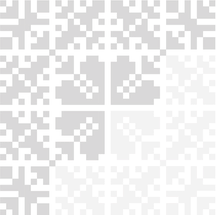C8 M3 L3 Grammar
8 | Modul 3: Gramatika
Ljubav prolazi kroz želudac
8 | 3 | Lekcija 3: U restoranu
| The Verb NUDITI
The verb nuditi can be used in different situations, but all with the meaning of to offer. Look at the examples below.
NUDITI | |||||
SINGULAR | PLURAL | ||||
ja | nud-im | mi | nud-imo | ||
ti | nud-iš | vi | nud-ite | ||
on/-a/-o | nud-i | oni/-e/-a | nud-e | ||
hrvatski | engleski |
Uvijek kad idem kod Marka on mi nudi kavu. Dobro zna da ja ne pijem kavu. | Every time I go and visit Marko he offers me coffee. He knows well that I don’t drink coffee. |
Naš restoran nudi raznoliku hranu. | Our restaurant offers a variety of food items. |
Trgovina nudi razne proizvode. | The shop offers different products. |
| Personal Pronouns in the Accusative Case as Direct Objects
Often in speech, if we know what we are talking about, we can use a personal pronoun instead of the noun we are referring to. For example: Have you seen the movie? – Yes, I saw it yesterday. This same concept is possible to express in Croatian as well. However, we need to think of the gender of the noun and the correct form of the personal pronoun that would be used in its place in the Accusative case. Let’s look at several examples in the Present tense.
m. sing. | Poznaješ li Jamesa? | Da, poznajem ga. |
f. sing. | Poznaješ li moju sestru? | Da, poznajem je. |
n. sing. | Poznaješ li moje dijete? | Da, poznajem ga. |
m. pl. | Poznaješ li moje prijatelje? | Da, poznajem ih. |
f. pl. | Poznaješ li moje sestre? | Da, poznajem ih. |
n. pl. | Poznaješ li moju djecu? | Da, poznajem ih. |
Personal pronouns in the Accusative.
As you know, personal pronouns in the Accusative case can have stressed and unstressed forms. Look at the table below.
Nom. | ja | ti | on ono | ona | mi | vi | oni one ona |
Acc. stressed | mene | tebe | njega | nju | nas | vas | njih |
Acc. unstressed | me | te | ga | je / ju | / | / | ih |
Only the feminine singular form (ona) has two different unstressed options. The difference between them is that one form is used in present and future tense sentences (the form: je), while the second form is used in past tense sentences (the form: ju). Look at the examples:
present | Poznaješ li moju sestru? | Da, poznajem je. |
future | Hoće li vidjeti sestru danas? | Da, vidjet ću je večeras. |
past | Je li on vidio tvoju sestru? | Da, vidio ju je. |
As you can see, in the past tense, the unstressed form je comes between the verb and the auxiliary verb to be. It’s not like the English structure. Note that in the past tense, the feminine unstressed form je becomes ju. The reason for this lies in the fact that we cannot have je je together. For example: vidio je (unstressed form) je (unstressed form of the verb biti) - it has to become vidio ju je.
Je li on vidio tvoju sestru? | Did he see your sister? |
Da, vidio ju je. | Yes, he saw her. |
G | 8.3 Zadatak 1. xxx |
Jesi li pročitao knjigu? – Da, pročitao sam ju je.
Jesi li me vidio na pozornici?
Jesi li vidio brod na moru?
Jesi li vidio polja?
Jesi li gledao u nebo
Jesi li imao čokoladu


